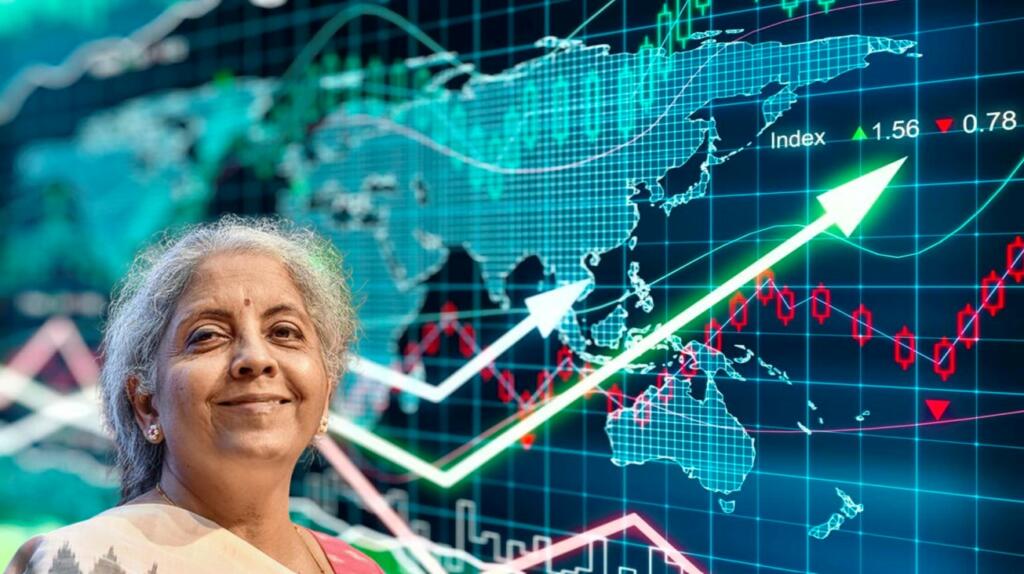- The Economic Survey predicted the Economic growth for next year to be around 8-8.5% given certain factors remain as assumed.
- According to the survey, “The projection is based on the assumption that there will be no further debilitating pandemic related economic disruption, monsoon will be normal, withdrawal of global liquidity by major central banks will be orderly,”
- Currently, India is a 3 trillion dollars economy and the fifth-largest in the world. If India is able to post around 8 percent economic growth in the ongoing decade, it will become the third-largest economy. Doubling in size, the GDP would be around 6 trillion dollars leaving Japan and Germany, which are registering very tepid economic growth, far behind.
Economic Survey, the document tabled by the finance ministry a day before the budget, was released by the Finance minister yesterday. The Economic Survey is a document that presents the State of the Indian Economy to the people of the country. In the last few years, it has also become a document to put forward the ideas of the Principal Economic Advisor in the open domain, but this year it reverted to being a document on the State of the Economy.
In the absence of a Chief Economic Advisor, the Economic Survey was prepared by Principal Economic Advisor Sanjeev Sanyal. The Modi government appointed V Ananth Nageswaran as the Chief Economic Advisor a few days ago but given the fact the document was prepared by PEA, he made the presentation to the journalists on the Survey.
The Economic Survey predicted the Economic growth for next year to be around 8-8.5% given certain factors remain as assumed. This means that India will retain its position as the fastest-growing economy in the world. Moreover, the growth number given in the Economic Survey are conservative estimates because many other agencies have projected a better number for the country.
“The projection is based on the assumption that there will be no further debilitating pandemic related economic disruption, monsoon will be normal, withdrawal of global liquidity by major central banks will be orderly,” according to the survey. It also depends on oil price being in the range of $70-$75 a barrel and global supply chain disruptions easing.
Given the fact that the effect of base effect will be eroded with around 9-9.5% growth rate this year and the economy will be above the pre-pandemic level, an above 8% growth rate is certainly a very good number. Countries like China and Brazil, which were growth engines of the global economy for the last four decades along with India, are fading away with below 5 percent growth while India’s growth is estimated at above 8 percent in all estimates.
Currently, India is a 3 trillion dollars economy and the fifth-largest in the world. If India is able to post around 8 percent economic growth in the ongoing decade, it will become the third-largest economy in the world after the United States and China. Doubling in size, the GDP would be around 6 trillion dollars leaving Japan and Germany, which are registering very tepid economic growth, far behind.
The Economic Survey this year aims to make the document a one-stop solution for the data on the Indian economy. So, while it did away with the first volume that was introduced by Arvind Subramanian to put his ideas in the public domain, the second volume has been strengthened with a vast amount of data on sector-wise exports/imports, external sectors, 80 high-frequency indicators to track the economy, reforms introduced in the last few years, subsidies, and so on.
Now the people interested in public policy and public finance do not need to visit multiple resources to access macroeconomic data for the last year and estimated projections for the next year because the Economic Survey provides a one-stop solution for all this data.
Moreover, in the last chapter, the Economic Survey provided some very good visuals of urban infrastructure, population density, crop patterns using various geo-spatial and satellite images. The Survey is a highly readable document and presents the State of the Indian Economy, which is very optimistic for the ongoing decade.
